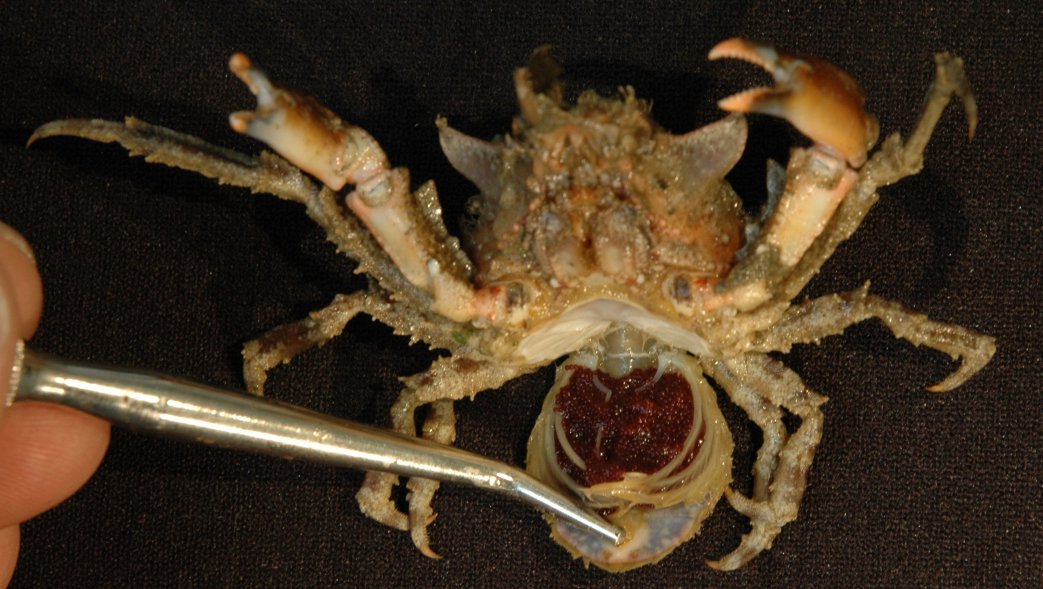Pugettia gracilis Dana, 1851Common name(s): Graceful kelp crab, Kelp crab, Spider crab, Graceful rock crab, Slender kelp crab |
|
| Synonyms: Pugettia lordii, Pugettia quadridens var gracilis | 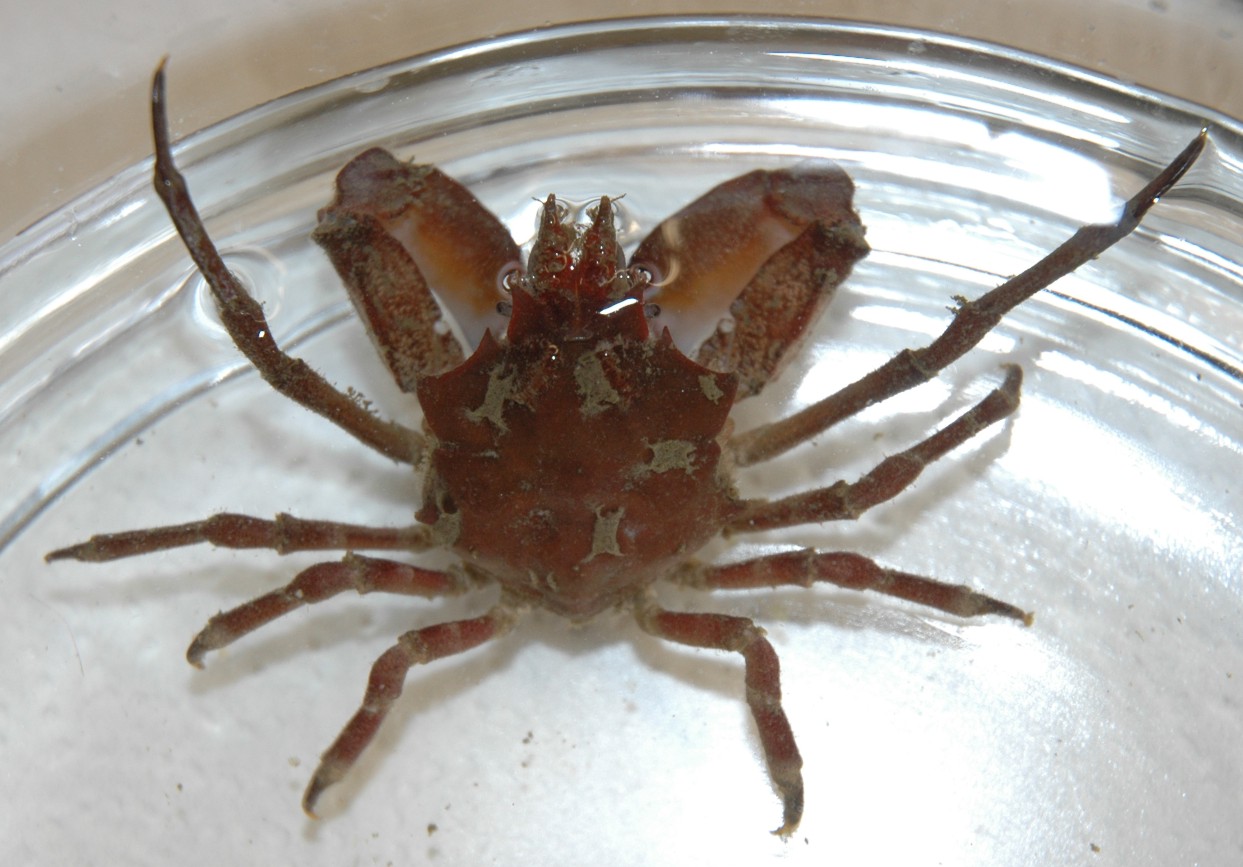 |
| Phylum Arthropoda
Subphylum Crustacea Class Malacostraca Subclass Eumalacostraca Superorder Eucarida Order Decapoda Suborder Pleocyemata Infraorder Brachyura (true crabs) Family Epialtidae |
|
| A small Pugettia gracilis. Carapace width about 2.5 cm | |
| (Photo by: Dave Cowles, July 2006) | |
How to Distinguish from Similar Species: Pugettia richii (mostly on the open coast) has a narrower anterolateral tooth, plus does not have a distinct ridge of tubercles on the merus of the cheliped and does not have the orange and blue tips on the chelae. Oregonia gracilis has a longer rostrum, about half the length of the carapace, consisting of 2 spinelike processes instead of flattened ones. It also decorates itself, which this species usually does not do. Cancer gracilis is a cancer crab. Pugettia producta grows much larger and has a smooth dorsal carapace surface.
Geographical Range: Attu Island (Aleutian Islands, Alaska) to Monterey Bay, CA. Common in Monterey Bay.
Depth Range: Low intertidal (on rocky shores) to 140 m. Young are often among eelgrass.
Habitat: Eelgrass and kelp; both on outer coast and on protected shores. Also on pilings in strong currents.
Biology/Natural
History:
The spines
on the legs may help this crab hang onto the kelp and avoid being swept
off. This crab does not usually decorate itself much, but it
does
so occasionally. Predators include halibut, clingfish,
kelpfish,
and woolly sculpin. During mating, the male lies on its back
and
the female stands above, facing him. Ovigerous females have
been
found through most of the year in Puget Sound. Females have
around
6200 to 13,000 eggs per brood. The long legs of this crab are
especially
agile, and they can reach far above and behind them for defense.
| Return to: | |||
| Main Page | Alphabetic Index | Systematic Index | Glossary |
References:
Dichotomous Keys:Coffin, 1952
Flora and Fairbanks, 1966
Hart, 1982
Kozloff 1987, 1996
Smith and Carlton, 1975
Wicksten, 2009
General References:
Carefoot,
1977
Harbo,
1999
Johnson
and Snook, 1955
Kozloff,
1993
Morris
et al., 1980
O'Clair
and O'Clair, 1998
Ricketts
et al., 1985
Sept,
1999
Scientific
Articles:
Burnett, Nicole, 2024: A practical identification guide to the zoeae of the invasive European green crab, Carcinus maenas (Linnaeus, 1758) (Decapoda: Brachyura: Carcinidae), and to the zoeae of the families of brachyuran crabs in Washington state, USA. Journal of Crustacean Biology 44:4. doi.org/10.1093/jcbiol/ruae064
Lutts, Donald Jr., 1960. Laboratory culture methods
and
larval stages of Pugettia
gracilis
(Dana). Masters thesis, Walla Walla College. 37 pp.
Web sites:
General Notes and Observations: Locations, abundances, unusual behaviors:
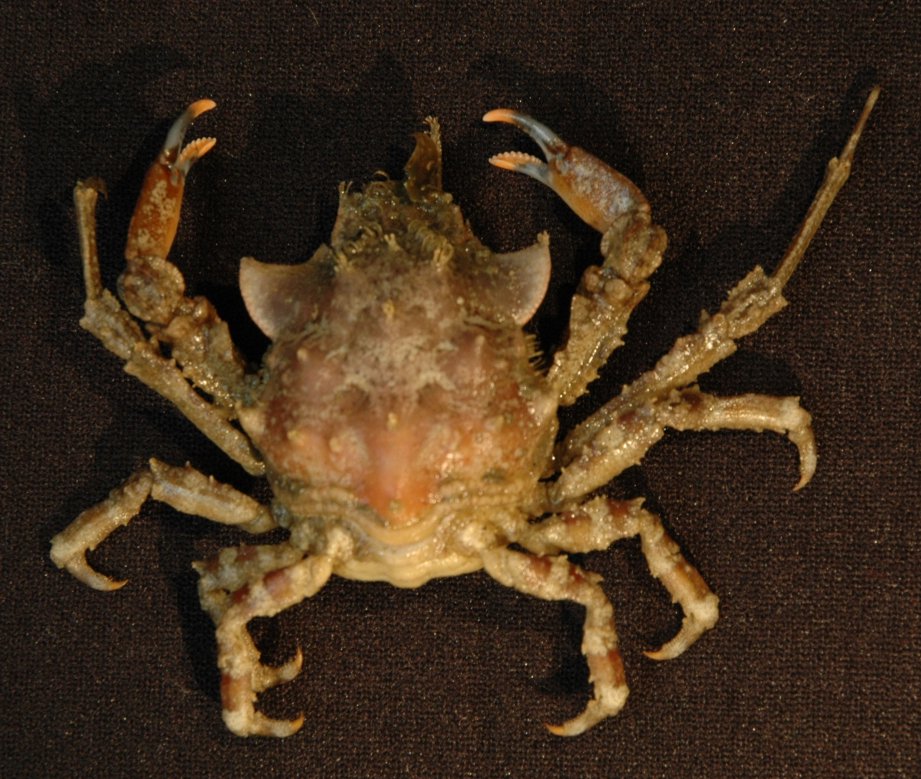
A female Pugettia gracilis (one rostral horn is
broken). Carapace
width about 2.5 cm

The merus of the cheliped has a distinct ridge (in males), with teeth,
on its dorsal surface. This is a male. See the
photo below
for another view.
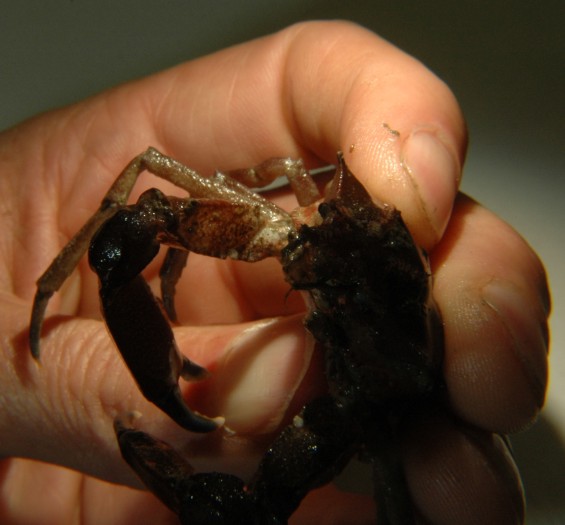
In this view of a male the ridge on the merus of the cheliped (lighter
colored in the photo above) can be clearly seen.
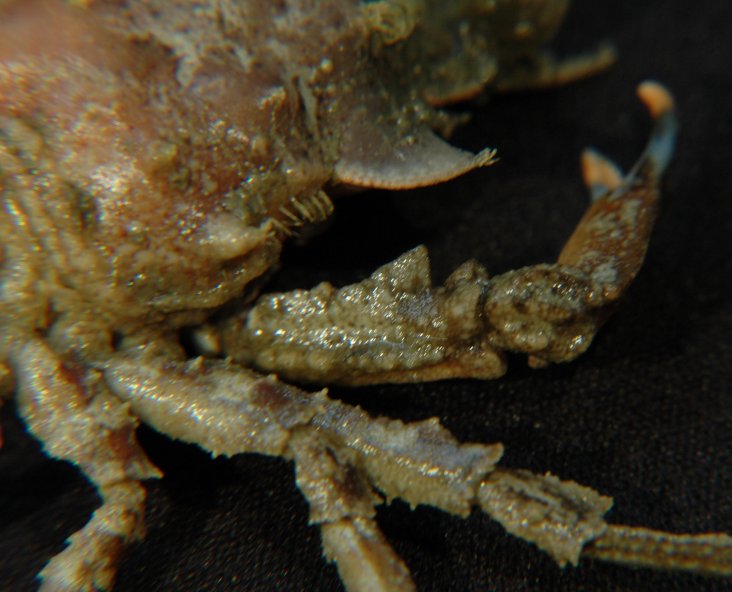
In females such as this individual, the ridge on the merus is more
broken up.
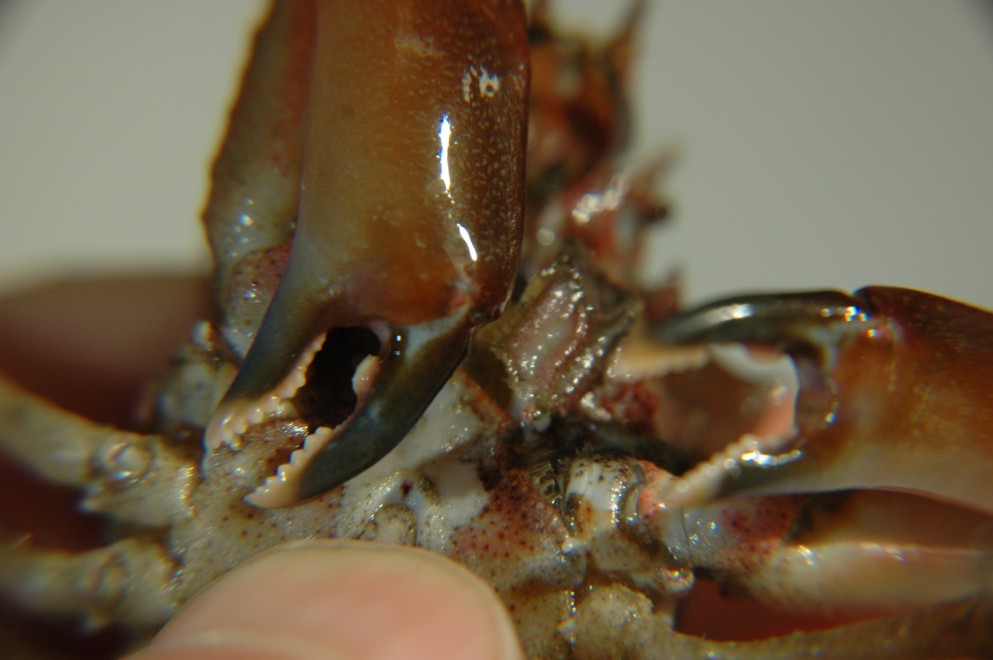
The chelae are blue near the end, with orange or white tips.

Pugettia gracilis
tend to decorate themselves with algae and other objects, but it seems
to me that this individual has taken the idea too far! The kelp is so
large that it is difficult for the crab to walk around, especially if
there is any current! Photo by Dave Cowles, July 2024
Authors and Editors of Page:
Dave Cowles (2005): Created original page
Edited by Dave Cowles 2006-

